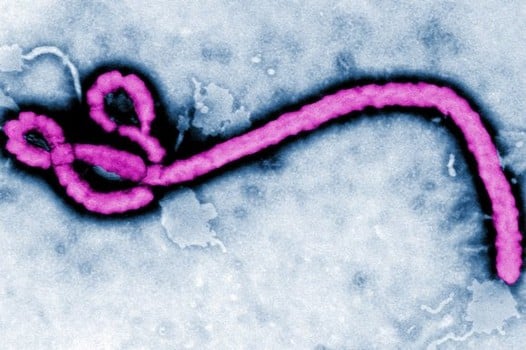
What You Need to Know About the Ebola Outbreak
What is the Ebola Virus?
Ebola virus, also known as Ebola hemorrhagic fever, is a virus that causes damage to the immune system. It is highly infectious and is often fatal. The virus was first identified in 1976 when there was an outbreak in what is now called the Democratic Republic of the Congo. The disease got its name due to the proximity of the outbreak to the Ebola River. Since that time the virus has appeared a number of different times in places across Africa. Ebola virus has a very high mortality rate. On average, an outbreak causes death in 73 to 90 percent of its victims.
Current Outbreak
There is a current outbreak of Ebola virus that has been documented in several countries in western Africa, including Guinea, Liberia, Nigeria, and Sierra Leone. The outbreak struck in March of 2014 and has been the largest outbreak in the known history of the virus. The largest Ebola virus outbreak prior to the current outbreak was in 1976 when Ebola virus was first discovered. In 1976 there were 602 cases and 431 deaths related to the virus. In the 2014 outbreak there are more than 1975 cases, with 1069 deaths already. The current outbreak has hit in an area that is much more populated that the locations of the previous outbreaks, and so more people are being exposed to the virus. It is important for both doctors and the public to understand how the virus is spread and what preventative measures can be taken to keep oneself safe.
Transmission of the Virus
Health researchers have not been able to definitively confirm the primary host of Ebola virus but believe the host to be the fruit bat. Humans, as well as some other animals, are able to carry the virus and can become ill due to the virus. Once a human has become infected, the virus is spread by human-to-human contact. The disease is spread from one person to another by direct contact with the bodily fluids of an infected person or direct contact with an object, such as a needle, that has been infected by the bodily fluids of a contagious individual. Ebola virus is not transmitted through air, food, or water. A person is not contagious if they are not showing outward symptoms of the virus. Symptoms normally present within 2 to 21 days of being infected. If a person does not show symptoms within 21 days of being exposed to the virus, they are very likely to stay asymptomatic.
Testing for the Virus
Infectious disease blood testing can be used to help confirm a diagnosis of Ebola virus in living patients, as well as in those for whom the virus was fatal. Ebola virus attacks the immune system, so blood samples are taken to analyze the immunobiochemistry of a symptomatic individual. Two of the most common blood tests used to test for Ebola virus are the enzyme-linked immunosorbent assay (ELISA) test, where lab technicians look to see if certain enzymes attach to a viral antigen, and the reverse transcriptase polymerase chain reaction (PCR) test that assesses RNA activity.
Prevention Methods
Preventing the spread of Ebola virus can be difficult. The beginning symptoms of the virus are fever, headache, weakness, and vomiting. These symptoms are fairly broad and may be caused by any number of common and non-fatal viruses. The illness is often misdiagnosed at the beginning of an outbreak, and so friends and family continue to have contact with the infected individual and may become infected themselves before it clear that the virus is serious or life threatening. If an individual presents with these symptoms during an outbreak or when there is reason to believe the symptoms may be due to Ebola virus, that individual should be quarantined and monitored. The main method of prevention of the spread of Ebola virus is to practice careful hygiene. One should avoid direct contact with the bodily fluids of infected individuals. One should also avoid contact with objects that may have come into contact with these fluids. If contact is made, one should wash thoroughly and monitor themselves for any symptoms.
How it is treated
Unfortunately, there is no vaccine, cure, or approved treatment for Ebola virus. An infectious disease blood test can be used to diagnose Ebola virus, but as of yet “treatment” simply involves stabilizing symptoms as they occur. The patient’s fluids, oxygen, and blood pressure are highly monitored. There are some experimental treatments that have shown some results in laboratory- infected animal subjects, but these treatments have not yet been tested on human subjects.

